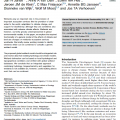Extensive forest management supports higher levels of overall and threatened biodiversity than intensive management
Forests are home to over 80% of terrestrial biodiversity. Yet, forest biodiversity is heavily threatened by forest degradation as a result of forest management for wood extraction and food production. To bend the curve of biodiversity loss, there is a need to facilitate transitions to forest management that mitigate negative effects of forest use on biodiversity. To facilitate such transitions, it is vital to understand the effects of different forest management practices on biodiversity.
In this newly published study, we analyzed the responses of plant and animal communities to forest management over time. To do this, we analyzed observation data of 182 studies (312,453 abundance values) from three global biodiversity databases to estimate the effects of seven types of forest management on plant and animal (i.e., insects and vertebrates) biodiversity over time, and on threatened animals. We captured biodiversity in four distinct metrics (i.e., quantifiable measures of community composition): (i) intactness, (ii) relative species richness, (iii) compositional similarity, and (iv) relative total abundance, all calculated as the difference in biodiversity between managed and undisturbed forests.
We find larger effects of forest management on intactness and similarity compared to richness and abundance. This suggests that forest management leads to a loss of species that specifically occur in undisturbed forests but that this decline is partially offset by an influx of species from other areas. We find that extensive forest management, such as selective cutting and agroforestry, supports higher levels of overall and threatened biodiversity than intensive management, such as forest and perennial tree crop plantations. We also find significant increases in animal community intactness and similarity in agroforests and forest plantations over 40 and 80 years since establishment, respectively, but do not find this for relative species richness and total abundance. This indicates that animal communities in these management systems become increasingly similar to those of undisturbed forests.
What does this all mean for forest management globally? Overall, our results highlight the potential of selective cutting and agroforests to mitigate biodiversity loss compared to more intensive systems, as well as the potential of longer rotation periods in forest plantations to increase habitat availability for species specifically adapted to undisturbed forests. In the near future, he results the outcomes of this study will aid the integration of different types of management systems in the GLOBIO model to evaluate the effects of transitions in forest management on biodiversity over space and time.

![]() Link to ForestPath website and interview with lead author
Link to ForestPath website and interview with lead author
Authors: Hanneke van ‘t Veen, Koen Kuipers, Aaafke Schipper, Alexandra Marques, Mart-Jan Schelhaas and Rob Alkemade



